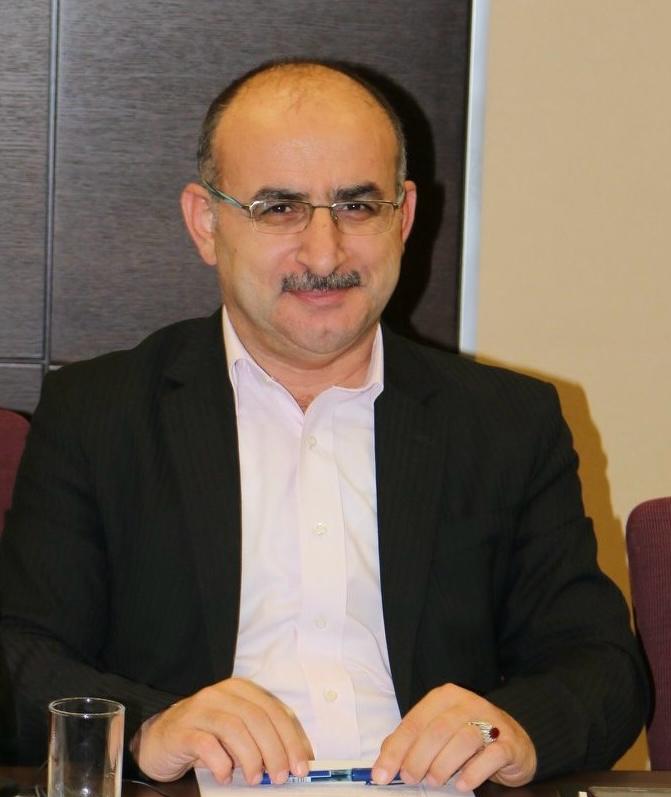Syria: A Crisis in the foundation!
By Aqil Said Mahfouz
Syria has been plagued by “birth issues” or “state-building problems” since it formed as a state or proto-state in the modern sense following World War I (1914-1918). These problems emerge with every crisis the country experiences, whether large or small. It seems there is little possibility of overcoming them, as no one has attempted it with the necessary zeal and seriousness, and those who have tried have failed to achieve a significant level of success.
Entity Formation
‘Syria’ or the ‘Syrian sphere’ has often been part of larger empires, ruling systems, and wider power structures. Simultaneously, it has been divided into domains of rule and authority that may either align or conflict with each other. There is much discussion about how Syria has not been governed by ‘Syrians’ for centuries, and that the Syria we know today, post-colonial Syria, may be the first state to have sustained its entity and geographical configuration for a significant period. This observation warrants further scrutiny.
While there were ideas about ‘Syria’ and the ‘Syrian phenomenon’ that encompassed the geography, societies, and cultures of what is known as ‘Bilad al-Sham’ (Greater Syria), along with its interactions with the broader historical Levant, these ideas did not represent a mainstream or governing intellectual or political current, nor a widespread cultural or value-based phenomenon. Instead, they were primarily the orientations of intellectual and cultural actors and were not prevalent in what later became known as “Syria” and “Bilad al-Sham.” Moreover, these ideas lacked impactful political “representations” or “embodiments.”
The issue does not stop with the idea or goal of “building a state” in Syria as we traditionally understand it. There was some progress during the mandate period—termed the “colonial state”—and even afterward in what is known as the “national state” or “state of independence.” While this development was understandable and legitimate, the challenge lies in the more complex goal of constructing a “Syrian state.” This ambition presents profound difficulties.
Foundational Mark
It seems that the “foundational mark” or “establishment” of Syria continues to shape the socio-political phenomenon in various ways. This issue is not exclusive to the Syrians; these challenges place them in interaction with other entities, especially regarding entity formation, geography, borders, statehood, and the dynamics of alliances and conflict in the region.
Notably, this entity formation and statehood was not a result coming from the Syrians (or those who would later be known as Syrians) themselves. They were rarely consulted, and their desires and aspirations were not taken into account. Rather, they became—de facto or through international law—Syrians primarily in a political sense, rather than in a cultural, existential, or historical context. International borders included people or groups not previously oriented toward Syria while excluding groups of Syrians and incorporating them into other countries formed colonially. This point requires further investigation.
Historical Failure
The Syrians have largely failed to comprehend the meaning and concept of Syria and the establishment of a Syrian entity. Here, the term “entity” is not used to belittle the “statehood” that has developed in Syria since around 1918, even though the official and semi-official political discourse, along with discourse beyond those realms, has been “suspicious” of statehood in Syria. There were ambitions that extended beyond the limitations of the Sykes-Picot Agreement and its aftermath. Furthermore, deep-rooted fears regarding “statehood,” stemming from historical anxieties concerning various forms of authority that have governed them for decades or centuries, have contributed to this failure. Some scholars have even suggested that “stateless” or “anti-state” tendencies exist in Syria, as articulated within political anthropology—a perspective that can also apply to the region at large.
This failure has placed Syria—both as a society and a state—under an existential threat with every crisis it faces, rendering the state and society—“what is considered a society” and “what is considered a state”—fragile and vulnerable to the dynamics of loyalty, affiliation, and formation, with minimal resistance to numerous external and internal pressures: foreign infiltration, internal tyranny, social divisions along tribal, religious, regional, and familial lines, sectarianism, and susceptibility to social conflict.
Collective Confusion
The ‘Syrians’ experience a form of ‘collective confusion’ in their self-awareness. This confusion manifests as ‘identity claims’ that present themselves under national, ethnic, and even class labels, yet these claims often lack depth and are regressive. Identity perceptions and inclinations tend to revert to aspects that are ‘sub-state’ and even ‘trans-state.’ Social formations, in all their variations, often transcend state boundaries.
Consequently, it becomes easy for individuals to shift from nationalist or perhaps modernist ideologies, slogans, and narratives to religious or sectarian ideologies, slogans, and practices, as well as ethnic or nationalist fervor. This shift may manifest as a mix of religious and sectarian zeal alongside ethnic or nationalist identity, occurring either ‘consciously’ and ‘intentionally’ or ‘unconsciously’ and ‘spontaneously.’
Moreover, the term ‘Syrian society’ or ‘society in Syria’—which are not synonymous—does not point to a reality that justifies itself, as Syrians have not formed a ‘society’ in the contemporary sense. The modernist formation has been little more than a superficial facade, under which dynamics of sectarianism, ethnicity, tribalism, and regionalism have unfolded, revealing complexities during recent years—especially during periods of crisis and conflict.
Social Hypocrisy
This leads to a state of ‘social hypocrisy,’ often collective or semi-collective, pushing a substantial segment of the population to engage in social deception and, to a degree, collective deception, showcasing agreements and value systems that transcend community, sect, denomination, or other affiliations. While this can have some beneficial aspects overall, it is fragile against mobilization and polarization in times of tension and crisis.
A striking example of this occurred in the aftermath of the regime’s collapse and the HTS takeover of power in Damascus (December 2024). In this context, many resorted to a form of ‘social opportunism,’ seizing the moment to adopt the rhetoric of ‘revolution’ and ‘freedom,’ while simultaneously espousing the narratives of ‘Islamisation,’ ‘sectarianisation,’ and related ideologies. This behavior, in part, reflects a socio-psychological reflex and embodies deeper social, cultural, and political dynamics that mirror profound perceptions regarding authority and de facto governance.
In conclusion, it appears that Syria, or what is commonly referred to as ‘Syria,’ is grappling with existential, foundational, or ontological issues—if one may say so—or ‘birth issues’ that remain unresolved. Despite this, there are ongoing dynamics of ‘fixation,’ production, and reproduction of these issues, as if they were an inescapable fate.
It is essential to acknowledge that what Syria is experiencing today is not unique or confined to its own circumstances. Many global entities and state formations have navigated the challenges of establishment or state-building with varying degrees of success, yet Syria has reaped little benefit from this. Nevertheless, there is hope that a segment of the Syrian population will emerge, capable of thoughtful dialogue, proposing collective and consensual frameworks to dismantle and address present and future issues, creating or suggesting viable alternatives.
In such circumstances, hope is neither shameful nor forbidden!




Comments are closed.